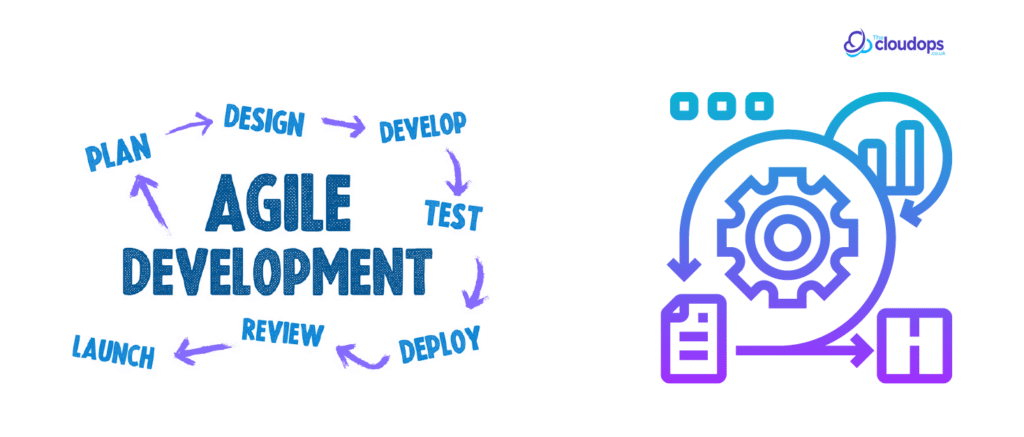Agile and DevOps are two popular methodologies used in software development to improve efficiency, collaboration, and delivery. Agile focuses on iterative development, flexibility, and customer satisfaction, while DevOps emphasizes continuous integration, testing, and deployment.
Despite their benefits, teams often make mistakes that hinder the success of Agile and DevOps implementations.
What is Agile?

Agile is an iterative and incremental approach to software development. It emphasizes flexibility, customer satisfaction, and teamwork.
Agile values:
- Individuals and interactions
- Working software
- Customer collaboration
- Responding to change
How do Agile and DevOps Interrelate?
Agile and DevOps are complementary methodologies. Agile focuses on development, while DevOps focuses on operations. Together, they form a powerful synergy:
Agile → Development → DevOps → Deployment and MaintenanceCommon Agile And DevOps Mistakes and How to Avoid Them
Inadequate Planning
Mistake: Insufficient planning leads to unclear goals and scope.
Solution: Use Agile planning tools like Jira, Asana, or Trello to define clear goals and scope.
Code Example: Use Jira’s Agile Board to track progress.
MarkDown
// Jira Agile Board Example
Project: My Agile Project
Sprint: Sprint 1
Goals:
+ Develop login feature
+ Implement user authentication
Poor Communication
Mistake: Lack of communication leads to misunderstandings and delays.
Solution: Use collaboration tools like Slack, Microsoft Teams, or email.
Code Example: Use Slack’s @mentions to notify team members.
MarkDown
// Slack Example
@john, please review the login feature PR
Inadequate Testing
Mistake: Insufficient testing leads to bugs and defects.
Solution: Use testing frameworks like JUnit, PyUnit, or NUnit.
Code Example: Write unit tests using JUnit.
// JUnit Example
public class LoginTest {
@Test
public void testLoginSuccess() {
// Test login success
}
}
Inadequate Monitoring
Mistake: Insufficient monitoring leads to undetected issues.
Solution: Use monitoring tools like Prometheus, Grafana, or New Relic.
Code Example: Use Prometheus to monitor application metrics.
YAML
# Prometheus Example
global:
scrape_interval: 15s
scrape_configs:
- job_name: 'my-app'
metrics_path: /metricsManual Deployment
Mistake: Manual deployment leads to errors and downtime.
Solution: Use automation tools like Jenkins, Travis CI, or CircleCI.
Code Example: Use Jenkins to automate deployment.
Groovy
// Jenkins Example
pipeline {
agent any
stages {
stage('Deploy') {
sh 'deploy.sh'
}
}
}
Shared Mistakes Between Agile And DevOps
Resistance To Change
Agile and DevOps require cultural changes. Some team members may resist these changes. This can hinder progress.
How to Avoid:
Foster a culture of openness. Encourage team members to share ideas and feedback. Training sessions can help ease the transition.
Neglecting Documentation
Both Agile and DevOps teams often underestimate the importance of documentation. Without proper documentation, knowledge can be lost.
How to Avoid:
Keep documentation up-to-date and accessible. Use tools like Confluence or Notion to collaborate and store information.
Tools And Technologies That Can Help Avoid Mistakes
Using the right tools is crucial for avoiding mistakes. For Agile, consider using Jira. It helps manage tasks and track progress effectively.
- Agile: Jira, Asana, Trello, Slack, Microsoft Teams
- DevOps: Jenkins, Travis CI, CircleCI, Prometheus, Grafana, New Relic
- Shared: Retrospectives, Surveys, regular meetings
Additional Best Practices For Agile And DevOps Teams
To ensure the success of Agile and DevOps implementations, teams should adopt the following best practices:
- Emphasize Customer Satisfaction: Prioritize customer needs and deliver value incrementally.
- Foster a Culture of Continuous Improvement: Encourage experimentation, learning, and growth.
- Define Clear Goals and Metrics: Establish measurable objectives and track progress.
- Ensure Cross-Functional Collaboration: Break down silos between development, operations, and quality assurance.
- Implement Continuous Integration and Delivery: Automate testing, building, and deployment.
Final Thoughts On Avoiding Agile And DevOps Mistakes
Agile and DevOps are powerful methodologies that can improve software development efficiency and quality. However, common mistakes can hinder their success.
By understanding these mistakes and using the right tools, technologies, and methodologies, teams can avoid pitfalls and achieve success.
Improved flexibility, faster time-to-market, enhanced customer satisfaction, and increased team collaboration.
DevOps focuses on continuous integration, testing, and deployment, whereas traditional IT operations emphasize separate development and operations phases.
The Scrum Master facilitates team collaboration, ensures Scrum framework adherence, and removes impediments to progress.
Yes, Agile and DevOps principles can be applied to various industries and projects, such as marketing, finance, and manufacturing.
CI/CD is a DevOps practice where code changes are automatically built, tested, and deployed to production.
Agile teams adapt to changing requirements through iterative planning, flexible prioritization, and regular feedback.
Agile emphasizes iterative development and flexibility, whereas Waterfall follows a linear, sequential approach.
DevOps automation complements manual testing by increasing efficiency and coverage, but human testing is still essential for complex scenarios.
Agile teams use metrics such as velocity, burn-down charts, and customer satisfaction surveys to measure progress and success.
DevOps engineers should possess skills in programming, automation tools, cloud computing, and collaboration, along with knowledge of Agile methodologies.